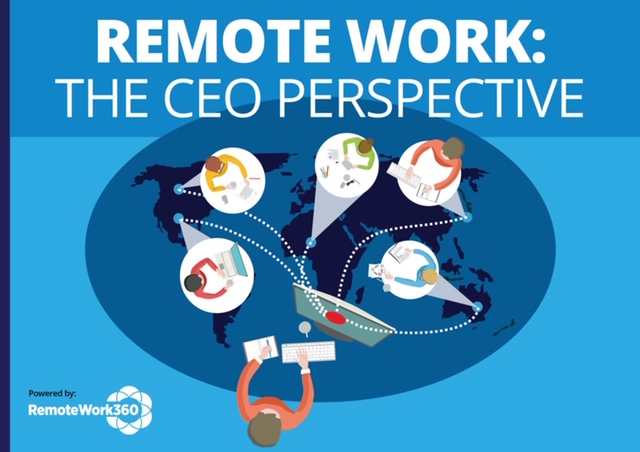Why Embracing Remote Work will be the New Normal for Most Businesses
- Home
- Supplier Directory
- Attendance & Monitoring
- Collaboration & Communication
- Cloud Telephony & VOIP
- Collaboration & Secure File Sharing
- Communication Software
- Creative Tools
- Culture Building
- Interactive presentations/screen sharing
- Messaging Tools
- Online Training
- Productivity
- Project Management
- Shared workspaces
- Time Tracking
- Video Conferencing
- Virtual Water Cooler
- Web Developer tools
- Finance/Accounting
- HR/Talent Management
- IT
- Managing Remote Teams
- Productivity
- Project Management
- Remote Workplace Wellness
- Sales & Marketing
- eNewsletter
- Events / Education
- About Us
- News
Remote Work Insights, Remote Work News, Remote Workplace Wellness
ByMike Kind
Answering the Remote Work / Return to Office Dilemma Post Pandemic with 4 Simple Facts
One of the underlying questions employers and employees are asking, is what will the post pandemic workspace landscape look like? Mike Kind, CEO of StanData – providers of tech that transforms workstations into wellness initiatives – shares his thoughts, in the first instalment of his new blog for RemoteWork360.
49% of Workers will be Working Remotely AT LEAST Part of the Time Post Pandemic.
When signs of Covid-19 emerged back in February, early March 2020, we had no way of comprehending the incredible disruption (and creative response / adaptation) that employers would face as states implemented stay at home orders. While the experience has been stressful for most and unlike anything we have ever seen in our lifetimes, it has also been eye opening in a myriad of ways.
One of the major questions on employees’ and employers’ minds alike is, “what will the work landscape look like Post Pandemic?” While many details remain unanswered, we can say today, with a high degree of confidence, that work environments that existed pre-pandemic will never be the same. In fact – Approximately half of America’s workers (about 80 million Americans) will continue working remotely post-pandemic. This is a significant increase from 16% of America’s workers that were working remotely last year. Here are 4 reasons why remote work is here to stay:

-
Employees have performed much better than anticipated in Work from Home (WFH) Environments that will improve even further post pandemic –
- Hard data has shown that employees working from home are more productive than in office environments by about 4%, which over the course of a year calculates to an additional 58 hours of productive time at work.
- This is a notable statistic that will improve post pandemic when you consider that employees with younger children at home are inevitably exposed to distractions.
- The rapid transition to WFH occurred with very little notice. Employees in most instances simply began WFH with little notice. Over time familiarity with technology available, organizingworkspaces and establishing routines invariable improve productivity.
-
Employees WFH experience a greater work-life balance and earnings increases

When you factor in –
- The average commute time of 52 minutes as reported by the US Census Bureau has been eliminated
- Data collected showing a reduction of in person meetings – (in a conference room or online) of 1: 4 ½ hours – WFH: In-office, respectively.
- The ability to work an adaptable schedule.
- Employees WFH are SAVING more without commuting expenses and incidental expenditures associated with daily commutes.
-
Employers are realizing unexpected benefits

- Transitioning employees to WFH environments will reduce the office footprint and significantly impact an organization’s bottom line – According to the SBA, rental costs alone can vary between $4200.00 to $14,800.00 per year depending on location. Bringing employees back post pandemic would significantly increase these costs by 50% or more when you factor in social distancing considerations and allowances.
- Improved recruiting capabilities – Offering remote work as an option to job applicants enables employers to cast a vastly wider net for employee recruitment as geography is no longer a consideration. Similarly, if a company’s headquarters are in a major metropolitan area, overall pay scales can be reduced if employees do not require relocation.
- Increased employee engagement and job satisfaction – While the saying “A happy employee is an engaged employee” should ring true, these are unprecedented times. The productivity numbers are showing positive signs overall and there are direct financial benefits to WFH for employees.
Over time however, it can lose its appeal causing decreases in productivity and motivation. Furthermore, working alone for extended periods of time has been shown to cause stress and anxiety in many people. SHRM has resources to address some of these potential challenges along with tools to engage remote workers.
-
Why 49% of workers will be working remote AT LEAST part of the time post pandemic, here’s why:
- According to a survey conducted by Clutch 34% of the country’s workers are fulfilling essential out of home duties that simply cannot be performed at home such as hospital healthcare workers, truckers, warehouse and grocery staff.
- 44% of the country’s workers that are working remotely are working from home (WFH) fulltime, leaving the remaining 22% of workers WFH less than 5 days per week.
- Feedback from this group of 44% has shown employees are pretty much split down the middle –
- 17% preferring to work in an office (39% of the 44% or 17% overall)
- 18% preferring to work remotely (40% of 44% or 18% overall)
- with the remaining 9% of workers citing no preference.
Taking into consideration the overall benefits of a remote workforce, as long as employers take the appropriate steps to keep the remote workers engaged and motivated, the only individuals that should return to the office fulltime would be the ones that preferred to do so. In other words, the 17% of the workers that stated they preferred to work in an office full time. Adding the 34% of workers that are fulfilling out of home duties to the 17% that preferred office environments would bring this total to 51%, leaving 49% of all workers working remotely AT LEAST part time.
This is a significant increase from 16% of the total workforce (26 million Americans) that worked remotely at least part of the time pre-pandemic according to the U.S. Bureau of Labor Statistics.
This staggering number of 80 million Americans WFH post pandemic represents a new series of challenges to American businesses which will be discussed in future articles.

Written by: Mike Kind, CEO StanData Technology.
Mike has been an active investor and CEO of both manufacturing and technology companies in the Office Ergonomics space for over a decade. He can be reached at mkind@standata.com
Related Posts
An estimated 86.3% of San Francisco employees are working from home, the highest rate among 10 major ...
May 11, 2021
In the third instalment of her blog - you can catch the first, on maintaining creativity here and ...
January 22, 2021
The different “kinds” of remote: finding the right fit your business Covid-19 has turned our world ...
January 14, 2021
RemoteWork360
RemoteWork360.com is powered by Chief Executive Group, which exists to improve the performance of business leaders, build communities and strengthen society.
Latest Insights
COPYRIGHT ©2020 REMOTEWORK360. ALL RIGHTS RESERVED.



